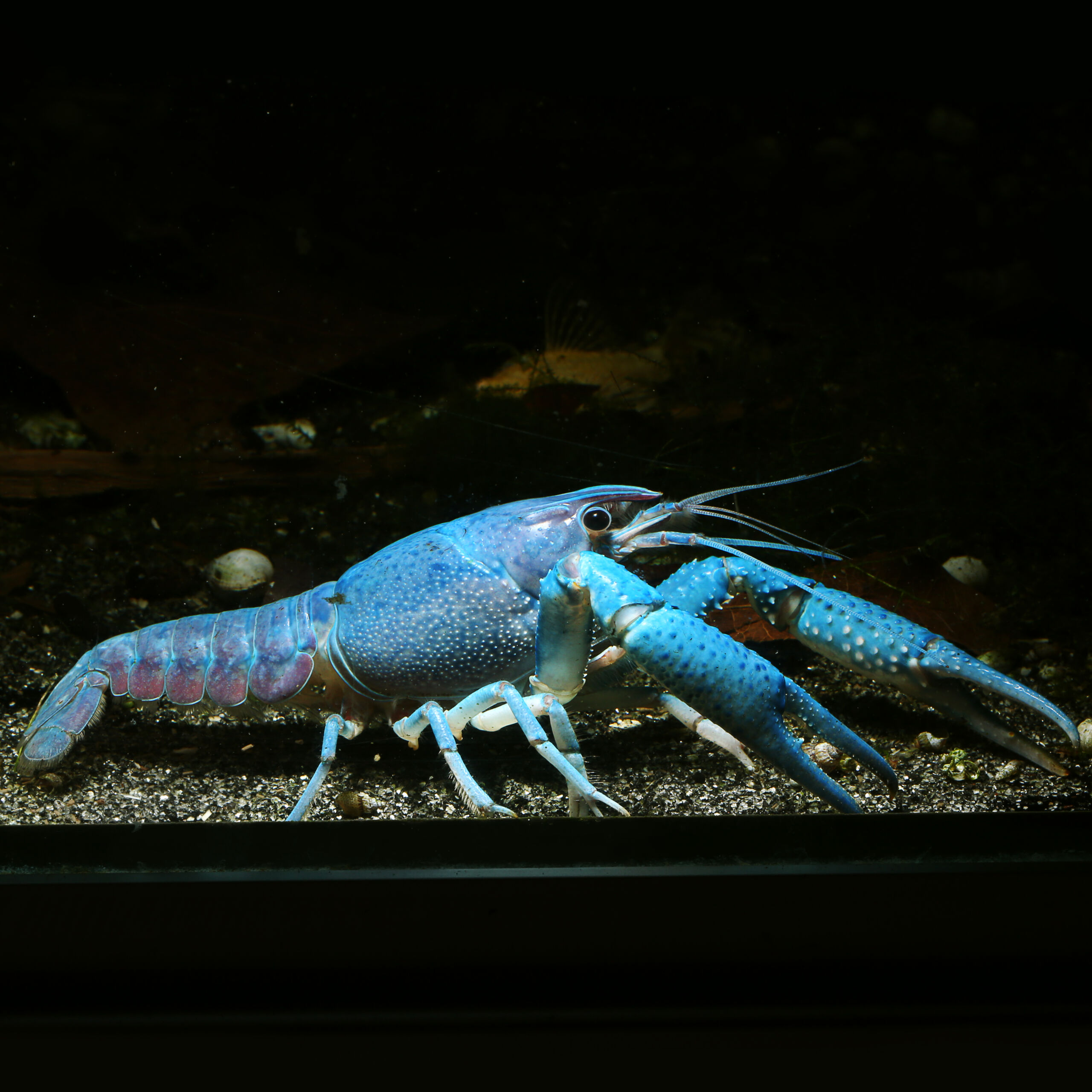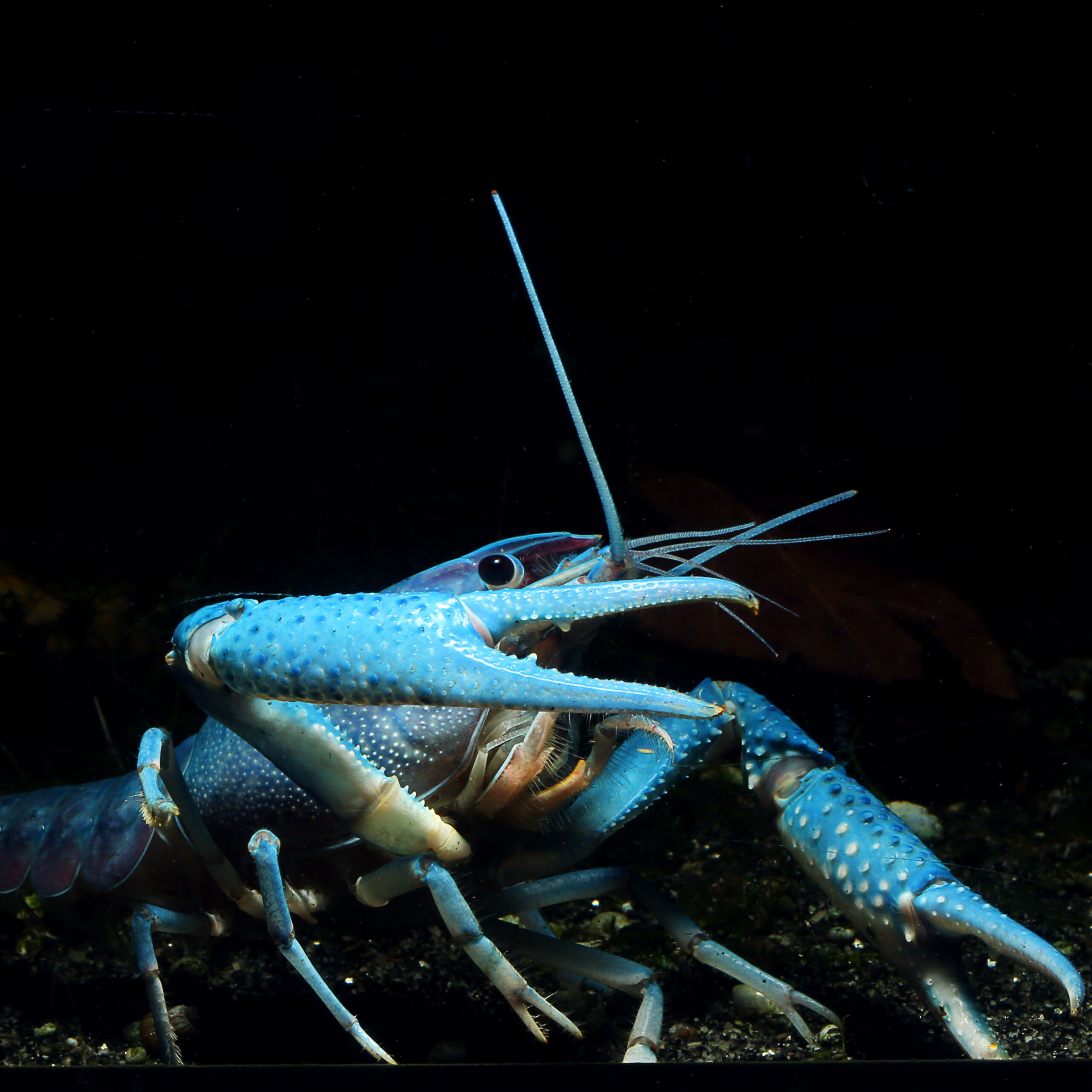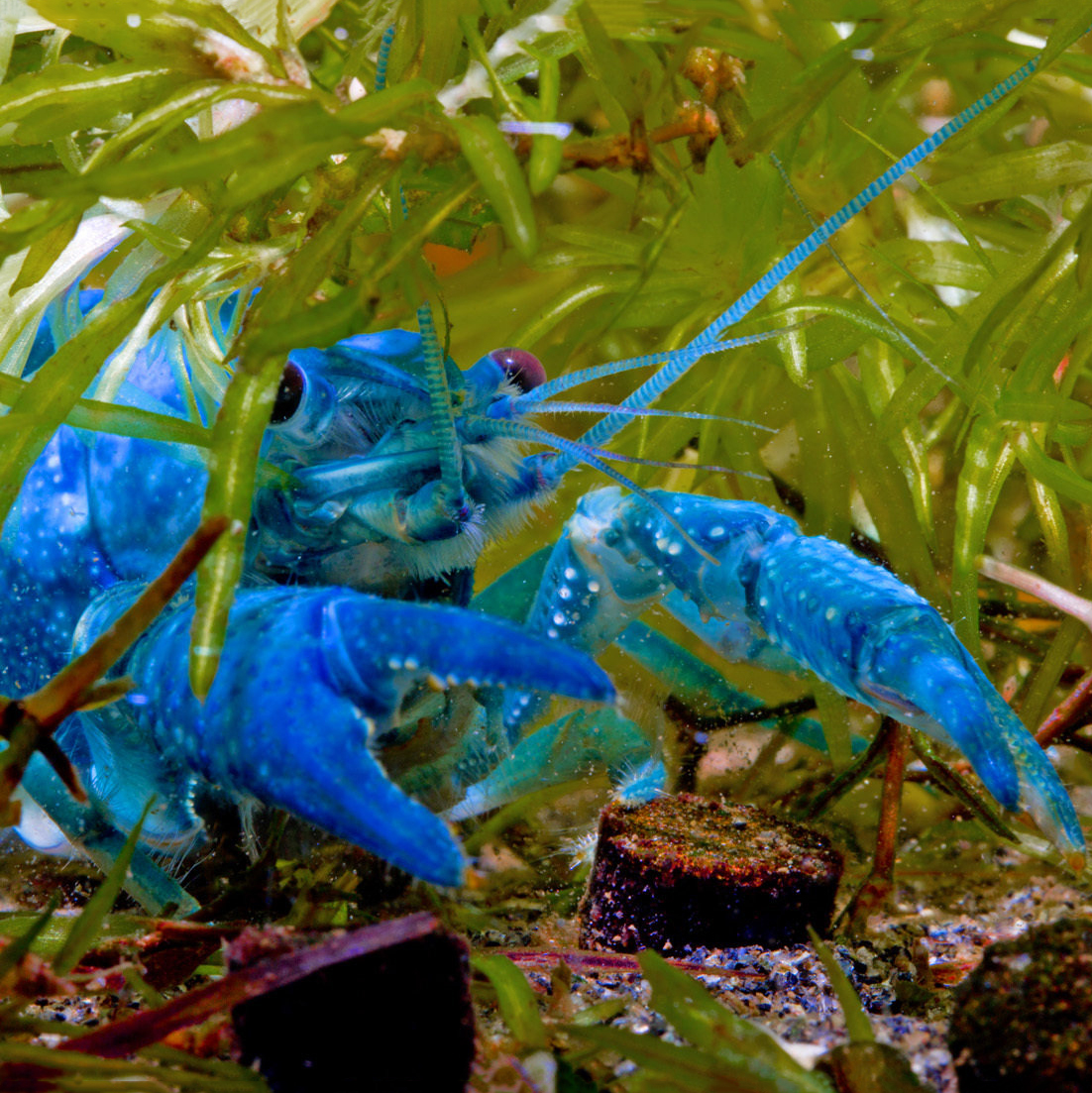Everglades Crayfish
Procambarus alleni
The Everglades Crayfish is an intensely blue colored crayfish from the USA.
- up to 15cm large crayfish
- beautiful blue coloring
- interesting aquarium resident
Choose your variation:
 Delivery in a few working days
Delivery in a few working days
 Free shipping from €60 across Austria
Free shipping from €60 across Austria





Important data
Product description & details
Procambarus alleni, also known as Everglades Crayfish, Florida Crayfish or Electric Blue Crayfish, originally comes from the southeast of the USA, where it is widespread in Florida and is mainly found in stagnant to weakly flowing waters. This species of crayfish averages around 10-12cm long, but can reach up to 15cm in length. The Everglades Crayfish is particularly striking due to its intense blue coloring.
Care in the aquarium
Due to its size, the Everglades Crayfish is only suitable for aquariums that hold 60 liters or more (we recommend 80 liters or more), whereby the floor space is more important than the aquarium height for the animals that mainly live on the bottom. However, this is only sufficient for a single animal. If a pair is to be held, the edge length should not be less than 100cm. It is advisable to structure the tank well with plenty of hiding and retreat options using roots, stones, plants, leaves, etc. so that the animals can stay out of each other’s way. The aquarium must also be made escape-proof as the crayfish is a good climber. The water should always be clean, which is why regular water changes are important, and have a temperature between 20 and 26°C. In contrast to the dwarf crayfish of the genus Cambarellus, Procambarus alleni can also eat healthy aquatic plants at times and is therefore not necessarily suitable for keeping in aquascapes. Since any fish or other invertebrates such as shrimp are viewed as food by the Everglades Crayfish, socialization is not possible.
Feeding
In nature, the Everglades Crayfish eats a very varied diet of plants, leaves and animal proteins in the form of fish, snails, carrion, etc. As an omnivore, it is therefore not picky in the aquarium. Shrimp food, green food, leaves, granulated food for crabs and frozen food are suitable.
Sexual characteristics and breeding
Male Everglades Crayfish can be recognized by their V-shaped gonopods (sexual opening), which are located between the walking legs at the transition to the abdomen. Procambarus alleni can be propagated in an aquarium. The female carries the fertilized eggs between its swimming legs until they hatch and even beyond. The newly hatched offspring are fully developed and can be fed with fine rearing food. Since the young animals have a strong tendency to cannibalize each other, there should be enough hiding places.







